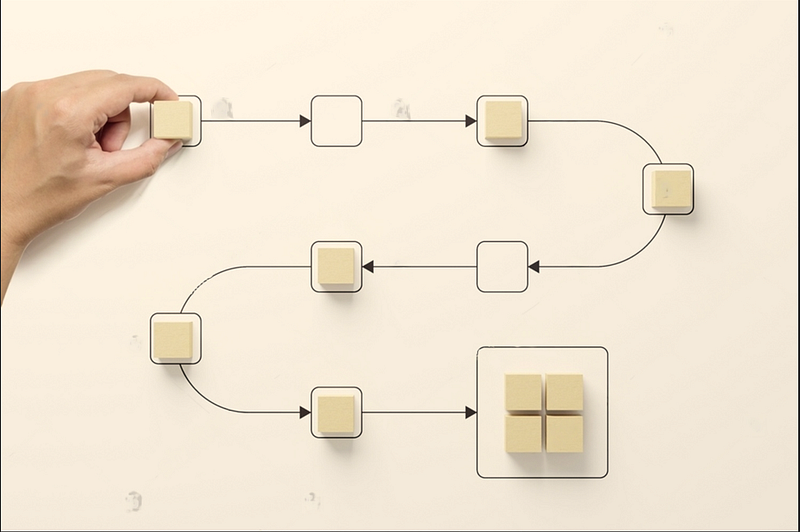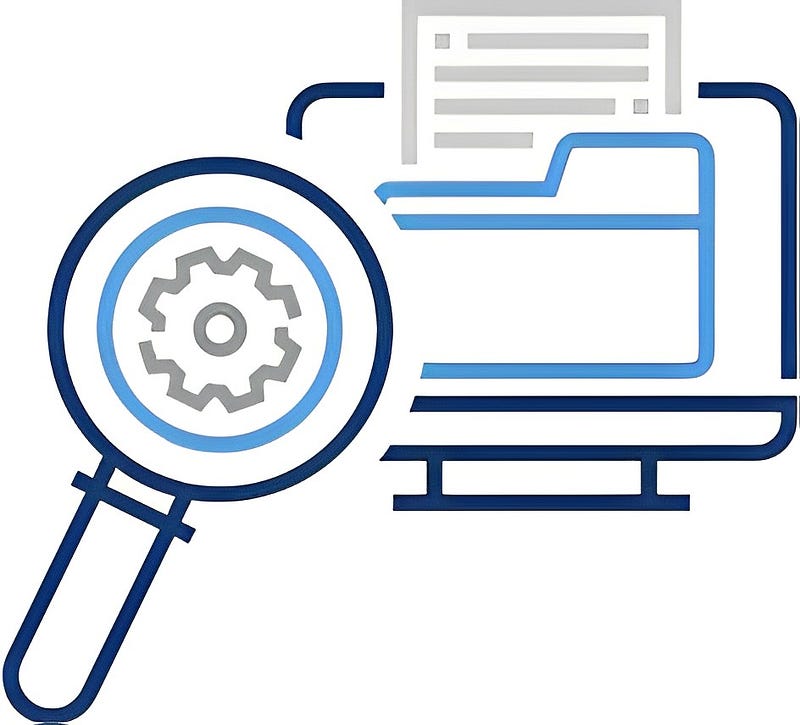What is Data Discovery and Why is it Important for Businesses
- Ndz Anthony
- May 3, 2023

Every day, businesses generate vast amounts of data, about 200 terabytes according to a recent study. This humongous amount of data lies dormant for most of the time, a sleeping giant. So what if there’s a way to derive insight from it? Data discovery aims to discover new insights to help businesses make better decisions and improve their operations.
But what is data discovery, and why is it important?
In this article, we will dig more into what data discovery is and why it is important for businesses.
Let’s start with what data discovery is.
What is Data Discovery?
Data discovery is the process of identifying and exploring data sets to uncover patterns, relationships, and insights. I like to think of data discovery as the process of turning ‘noise into knowledge. ‘
This can involve techniques and tools like data visualization, statistical analysis, and machine learning.
A data discovery platform is the most important tool for data discovery, it is a software tool that provides a wide range of functionality for exploring and analyzing data.
An excellent example of a data discovery platform is Datameer .
The goal of data discovery is to make the decision-making process data-driven, help businesses find new insights for making better decisions, and improve business operations.
Let’s see how businesses benefit from data discovery.
Benefits of Data Discovery

Are you wondering how data discovery can benefit your business? How can data discovery help businesses make better decisions?
Let’s look at four benefits of data discovery.
- It provides a 360-degree view of the company data.
Data discovery provides businesses with a comprehensive view of the organization’s various data streams. This helps these businesses marry their challenges to their customer’s demands.
- It democratizes decision-making and insight.
Every organization is made up of people with different levels of technical skills. Data discovery made it possible for these different stakeholders to be involved in data analysis.
- Data discovery provides an opportunity for companies to automatically control real-time data.
Using predefined controls, businesses can apply specific actions to the data they collect. This is excellent because it ensures that actions are properly stored, analyzed and that data practices are secure and compliant.
- It provides for automatic data classification based on context .
The amount of different data formats and context data-driven businesses have to deal with everyday is overwhelming.
The good news is, data discovery allows businesses to arrange all this information based on some predetermined conditions, context and even channels where it was collected.
Will any investment in a data discovery platform be a wasteful venture? What is the ROI of investing in data discovery?
A candid answer to the first question is an emphatic NO !
Here’s the ROI of data discovery;
Data discovery assists decision makers and their teams across all departments in finding and transforming data into actionable insight. It enables leaders to carefully investigate their processes and business models before making decisions. The result? They make decisions that add significant value to their organizations.
Next, let’s take a look at what is involved in data discovery, how does it work?
Let’s see.
The Process of Data Discovery

Data discovery is not a one-off affair but an ongoing process aimed at detecting patterns, errors, and outliers in a large dataset. To understand how it works, let’s briefly consider the 3 processes involved in data discovery.
- Data Preparation
- Data Visualization
- Analysis of data
- Data preparation: Data preparation is critical to the data discovery process. It involves cleaning, reformatting, and merging data from different sources into a single spot so that the next steps in the process, visualization, and analysis can run smoothly. Data preparation helps to filter out a lot of “noise” from the data, remove outliers, unify data format, and ensure a standard quality of data.
- Data visualization : Data visualization is the most important step in data discovery process, it is a means to fully comprehend the insights contained within the dataset. Visualizing data is very important as it allows everyone regardless of their data-oriented technical skills to understand the relationship among the different data streams in an intuitive way. Visualization can be through heatmaps, charts, graphs, scatter plots, etc most of which are interactive and intuitive.
- Advanced Analysis: The last step of the data discovery process uses descriptions and visualization to tell the story of the company’s data. It empowers the business to see the big picture of their data discovery efforts. This step provides descriptive stats that make the data readable and story-like.
Remember that data discovery is an iterative process and so your business must repeat and build on this process regularly, basically finetuning it.
Let’s discuss techniques that will be invaluable to your data discovery journey.
Techniques for Effective Data Discovery

Here are some tips to get you started:
- Create a data map: Before you start your data discovery process, it’s important to create a map of your data. This will help you understand what data you have, where it’s located, and who has access to it. A data map is also invaluable, helping you identify any gaps in your data that you need to fill.
- Use metadata: Metadata is ‘data about data’, and it can be incredibly useful for data discovery. With metadata, you can quickly find the data you need, based on attributes like data type, date created, and author.
- Utilize search tools: There are a variety of available search tools that can help you quickly find the data you need. Google search, for example, can be a powerful tool for discovering data that’s public. Also, internal search tools, like the ones provided by your organization, are useful for finding data that are only available internally.
- Use data profiling tools: Are you dealing with large and complex datasets? Data profiling tools can help in understanding the structure and content of your data.
- Collaborate with others: Finally, it’s important to collaborate with others during the data discovery process. The expression “two good heads are better than one” rings true here. Working with others can help you understand how others are using the data you’re looking for and even identify data that you may not have known existed.
Using these techniques, you can make your data discovery process more efficient and effective.
Ready to get started on your data discovery journey?
Not so fast! Let’s see the tools and technologies used in data discovery before you run off.
Tools and Technologies Used in Data Discovery

When it comes to data discovery, there are a variety of tools and technologies that can be helpful in the process. We will consider the most useful:
- Data discovery platforms: These platforms are designed to help organizations discover and access their data quickly and efficiently. They often include features like metadata management, search tools, and data profiling capabilities. Datameer is an example of a powerful data discovery platform.
- Business intelligence tools: BI tools allow you to create visualizations and reports based on your data, which can help you identify patterns and trends. This is particularly useful for data discovery.
- Data cataloging tools: These tools help you organize and catalog your data, providing a central repository for all your data, metadata, and search capabilities.
- ETL tools : Extract, transform, and load (ETL) tools can help you identify where your data is located and how it’s being used, making them useful for data discovery.
- Cloud-based storage: Cloud-based storage solutions like Snowflake provide scalable storage options that can handle large amounts of data. They often come with search and metadata capabilities, making them ideal for data discovery.
Leveraging these tools and technologies, you can streamline your data discovery process and save time and resources.
Because Datameer boosts all the capabilities of these tools and tech, businesses leverage it to optimize their data discovery effort.
Why Datameer?

When it comes to data discovery, choosing the right tool can make a big difference in the efficiency and effectiveness of your efforts. One of the best options on the market is Datameer, Datameer powerfully provides a wide range of features and capabilities.
With Datameer, you can quickly and easily discover and access your data through its metadata management, search tools, and data profiling capabilities. It also offers a user-friendly interface and intuitive data mapping, making it easy to navigate and understand your data.
What sets Datameer apart from other data discovery tools is its ability to handle large and complex datasets.
It can process vast amounts of data from a variety of sources, including cloud-based storage solutions like Amazon S3 and Microsoft Azure. Datameer is even built and optimized for Snowflake . These make it an ideal choice for organizations dealing with massive amounts of data.
Another key advantage of Datameer is its ability to integrate with other tools and technologies. It can be used alongside business intelligence tools, ETL tools, and other data discovery platforms to create a comprehensive data ecosystem for your organization.
It’s our turn to find out, why not Datameer? I can’t think of any answer to this, can you?
To Wrap Things Up
Data discovery is critical for businesses of all sizes, and a data discovery platform like Datameer can provide significant advantages.
Datameer is equipped to handle large data sets, automate many of the data preparation tasks, and provide advanced tools for data visualization and exploration.
So if you’re looking for a reliable, user-friendly, and efficient tool for data discovery, Datameer is an excellent choice. Its advanced capabilities, scalability, and flexibility make it the go-to tool for organizations of all sizes and industries.
Experience how Datameer can transform your business operations.
Book a demo with us today.


